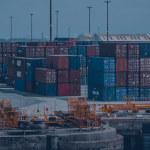In late 2024, UK authorities dismantled a sprawling international money laundering network—dubbed “Operation Destabilise”—that funnelled billions in illicit funds through cryptocurrency exchanges, aiding Russian spies, drug cartels and sanctioned oligarchs. The scheme, orchestrated by Moscow-based firms Smart and TGR Group, exploited regulatory gaps across over 30 countries, highlighting how fragmented anti-money laundering (AML) frameworks can be manipulated by sophisticated criminals. The National Crime Agency (NCA) described it as the most significant money laundering operation it had ever undertaken.
Such high-profile breaches underscore the urgent need for cohesive global AML standards. International bodies like the EU and the Financial Action Task Force (FATF) are currently intensifying efforts to harmonise AML regulations, aiming to close loopholes and enhance cross-border cooperation. This article explores these initiatives, examining how regulatory convergence and shared intelligence platforms are shaping the future of financial compliance.
The Problem: A Patchwork of Rules
Imagine attempting to assemble a jigsaw puzzle with pieces from different sets—some fit, others clash, and many are missing entirely. This metaphor aptly describes the current state of global AML regulations. Over the past decades, AML rules have evolved in response to specific national scandals, leading to a fragmented landscape. For instance, the United States’ Bank Secrecy Act of 1970 was a reaction to organised crime’s infiltration into the financial system. Conversely, the European Union’s AML directives have been shaped by various financial crises and political pressures, resulting in divergent implementation across member states.
This patchwork approach presents significant challenges. Financial institutions operating internationally must navigate duplicative or conflicting rules, leading to increased compliance costs and operational inefficiencies. Moreover, regulatory arbitrage becomes a concern, where entities exploit jurisdictional discrepancies to circumvent stringent regulations. Cross-border enforcement is also hindered, as inconsistent legal frameworks complicate cooperation between authorities. Cases such as the Danske Bank scandal underscore the pressing need for harmonised AML standards to effectively combat financial crimes on a global scale.
Is 2025 the Year of Convergence?
In 2025, the global fight against money laundering is entering a transformative phase, marked by significant strides toward regulatory convergence. The European Union’s new Anti-Money Laundering Authority (AMLA), headquartered in Frankfurt, commences operations in July 2025. AMLA is set to enhance the consistency of AML/CFT supervision across EU member states, coordinating national authorities and ensuring uniform application of EU rules .
Concurrently, the FATF has updated its Recommendation 24, strengthening requirements for transparency in beneficial ownership. This revision mandates countries to implement measures ensuring that competent authorities have access to adequate, accurate and up-to-date information on the beneficial ownership of legal persons, aiming to prevent misuse of corporate structures for illicit purposes .
Further to this, international bodies like the Organization for Economic Cooperation and Development (OECD) and International Monetary Fund (IMF) are advocating for enhanced cross-border collaboration, recognising the need for unified efforts to combat financial crimes effectively. The G7 has also emphasised the importance of shared technological platforms for suspicious transaction reporting, facilitating real-time information exchange among nations.
These developments signify a collective move toward harmonised AML standards, addressing previous challenges posed by fragmented regulations and paving the way for more robust global financial integrity.
Harmonisation
In the realm of AML, “harmonisation” doesn’t imply identical regulations across all jurisdictions. Instead, it signifies a strategic alignment of key elements to facilitate smoother international cooperation. A central aspect of this alignment involves standardising definitions, such as “Politically Exposed Person” (PEP) and “suspicious activity.” The FATF provides guidance on identifying PEPs, emphasising the need for enhanced due diligence due to their potential involvement in bribery and corruption.
Harmonisation also encompasses the establishment of comparable thresholds and reporting timelines, as well as the mutual recognition of risk assessments and enforcement actions. This approach aims to reduce regulatory arbitrage and enhance the effectiveness of AML measures globally.
A practical example of harmonisation in action is the collaboration between Singapore and the European Union on digital identity verification. Singapore’s Singpass system, which provides citizens with a secure digital identity, is being integrated with EU frameworks to streamline cross-border customer due diligence processes.
In essence, harmonisation in AML is about creating a cohesive framework that respects national differences while promoting global financial integrity.
The Role of Technology
Technology is proving to be a pivotal force in the harmonisation of AML standards across jurisdictions. Advanced AI-driven platforms are enabling financial institutions to monitor transactions in real-time, assess risks dynamically, and adapt to evolving regulatory landscapes. For instance, leading AML software providers like NICE Actimize and ComplyAdvantage offer solutions that integrate AI and machine learning to enhance detection capabilities and reduce false positives.
The FATF and Interpol have initiated efforts to develop shared typology databases, facilitating the exchange of information on emerging money laundering methods and trends . Additionally, blockchain analytics tools, such as those provided by Chainalysis and Elliptic, are now employed by regulators in over 30 countries to trace illicit financial flows and ensure compliance with AML regulations .
A notable example of technological collaboration is the partnership between the United Arab Emirates and Switzerland, where both nations are developing a real-time information exchange platform to enhance cross-border AML efforts . These advancements underscore that while technology serves as a catalyst for AML harmonisation, its effectiveness hinges on the standardisation of data inputs and regulatory frameworks globally.
The Politics of Alignment
AML harmonisation is as much a geopolitical challenge as it is a regulatory one. In the European Union, tensions arise between the General Data Protection Regulation (GDPR) and AML directives. While GDPR emphasises data privacy, AML efforts require transparency, leading to conflicts over data retention and sharing.
The United States has taken steps to modernise its AML framework through the Anti-Money Laundering Act of 2020. However, critics argue that the Bank Secrecy Act still imposes significant burdens on financial institutions without effectively deterring criminal activity.
Meanwhile, China’s Belt and Road Initiative (BRI) introduces another layer of complexity. While the BRI promotes infrastructure development and economic cooperation, it has also been associated with debt-trap diplomacy, raising concerns about transparency and compliance with international AML standards.
These examples underscore that achieving global AML harmonisation requires not only technical alignment but also political will and international cooperation.
Why This Matters for Business
For multinational businesses, the harmonisation of AML standards is more than a regulatory aspiration—it’s a strategic imperative. Unified AML frameworks can significantly reduce compliance costs by eliminating duplicative efforts and streamlining processes across jurisdictions. This efficiency facilitates quicker onboarding of international clients, enhancing customer experience and accelerating market entry.
Consistent regulations also mitigate the uncertainties associated with operating in multiple regions, allowing businesses to allocate resources more effectively and focus on growth. In the context of Environmental, Social, and Governance (ESG) considerations, robust AML compliance is increasingly viewed as a component of ethical governance. Financial institutions are under pressure to demonstrate their commitment to ethical practices, with AML measures playing a crucial role in this narrative .
More than a Buzzword?
As the global AML landscape evolves, the push for harmonisation opens the door to both opportunity and complexity. Could 2025 be the year we see the foundations laid for a “global AML passport”? Perhaps—but it will require sustained political will and trust between jurisdictions. As AI-driven compliance tools become more widespread, questions around privacy, ethical boundaries and unintended bias will demand attention. Meanwhile, smaller jurisdictions face a strategic choice: align with global norms or risk becoming financial outliers.
Failure to adapt to harmonised standards risks creating a divide between compliant firms and those operating in regulatory grey areas, potentially leading to reputational damage and loss of stakeholder trust. Embracing harmonisation is not just about compliance; it’s about positioning for sustainable success in a globally interconnected market. Harmonisation won’t solve every AML challenge—but in 2025, global alignment is finally more than a buzzword. It’s the beginning of a long-overdue shift toward clarity, consistency, and collaboration.
And what about you…?
- What challenges has your business faced when trying to comply with differing AML regulations across countries or regions?
- How is your organisation preparing for the increased use of AI and data-sharing platforms in AML compliance—and what concerns do you have around privacy or ethics?







